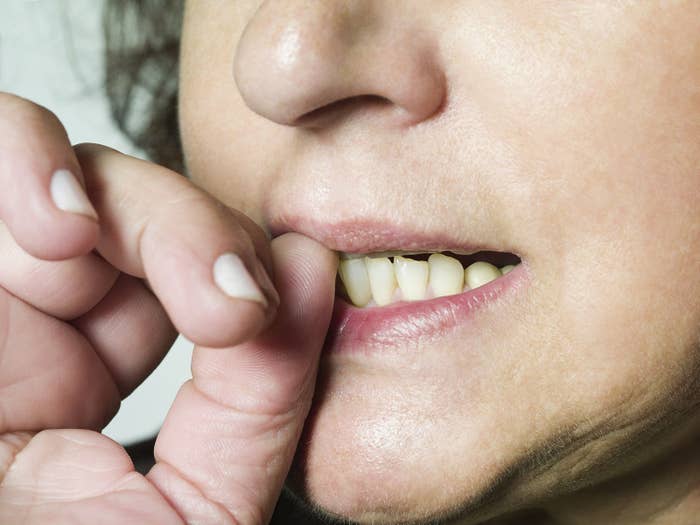
We hope you love the products we recommend! All of them were independently selected by our editors. Just so you know, BuzzFeed may collect a share of sales or other compensation from the links on this page if you decide to shop from them. Oh, and FYI — prices are accurate and items in stock as of time of publication.
Have you ever felt frustrated when friends or family members tell you to simply stop repetitively picking at your skin, biting your nails, or pulling out hair when you know it’s just not that simple?
Both skin picking and nail biting, as well as hair pulling, cheek or lip biting, and even nose picking can fall into the category of body-focused repetitive behaviors, or BFRBs. While many people pick at their skin or body, a BFRB is defined as any recurrent, problematic, and destructive behavior that is directed toward the body.
“What distinguishes the condition from a habit versus a disorder is that there’s either repeated attempts to stop picking or pulling and it’s very hard to stop,” said Dr. Lisa Zakhary, medical director of the Massachusetts General Hospital Center for OCD and Related Disorders. “Most importantly, the defining feature is that the condition is really causing distress or impairing social relationships or work in some way. Habits don’t tend to do that.”
About 5% of the population is affected by one of these conditions, according to BFRB.org, an organization that offers support and resources to connect people in the BFRB community and help them manage their symptoms.
How BFRBs are treated
While BFRBs share some characteristics with obsessive-compulsive disorder, they are not the same.
“OCD is considered distinct from OCD-related disorders,” Zakhary said. OCD is characterized by having intrusive thoughts that are difficult to stop or having compulsive behaviors, whereas hair pulling, known as trichotillomania, and skin picking, known as excoriation disorder (or dermatillomania, as it was previously known), are considered to be OCD-related disorders.
“They’re part of the OCD category, but they are not OCD,” she said. “Many people with skin picking or hair pulling don't have any OCD symptoms at all.”
Experts agree that the first step in determining which treatment is best for any given BFRB is to evaluate the severity of symptoms and what other underlying conditions are in play.
People with BFRB disorders tend to have increased rates of anxiety and depression, said John Piacentini, director of the Child OCD, Anxiety, and Tic Disorders Program at UCLA.
“Sometimes we actually want to start with the depression and anxiety first because that will reduce some of the triggers,” said Piacentini, who is also a professor of psychiatry and biobehavioral sciences. “But if I’m depressed because I pick or pull, we’ll start with the picking and pulling because that should help the depression.”
Though it’s always helpful to see a specialist for guidance, Zakhary said there are many roads to recovery outside of ongoing therapy for those who don’t have access to a specialist.
“Determining what way you get that therapy and if you actually need that therapy or can do a component of that therapy completely on your own depends on the severity of your symptoms,” she said. “Should you be in therapy? Should you start a medication? Are your symptoms mild enough that you can just see a dermatologist?”
Since BFRBs are focused on some part of the body like the skin or hair, it’s possible that a dermatologic trigger — such as an itchy scalp or persistent acne — is driving symptoms. In some of those cases, treating the dermatologic trigger may also lessen the BFRB.
However, if you or a specialist determine that therapy is the right move, it will likely consist of habit reversal therapy with a cognitive behavioral therapist.
“You’re basically trying to pair the urge that you feel before you have a tic or habit and re-pair that premonitory urge with new behavior,” said Adam Weissman, a psychologist at the Child & Family Institute. “That can basically work with anything from actual tic disorders to dermatillomania, trichotillomania, and any other common habits like nail biting.”
A premonitory urge is a feeling of discomfort or tension that can be relieved by a particular movement, like a motor tic, pulling hair, or picking at skin. If you don't have a tic disorder or BFRB, the feeling is akin to trying to ignore a mosquito bite. You can’t think about anything but that itch until you scratch it, and after you scratch it and get relief, you only want to do it again.
People with BFRBs undergo awareness training so they understand when their behavior is happening and what triggers it.
Essentially, the goal is to retrain your behavior so that instead of the premonitory urge leading to a body-damaging response, there’s a new behavior that is less harmful. This can include the use of a stress ball or fidget toy to occupy your hands (if your habit involves the hands or fingers) or relaxation techniques that help reduce behavior-exacerbating stress.
Known as stimulus control, changing your environment or distracting your fingers can make it harder for you to pick or pull. Weissman said that social support is also essential. It can be helpful to have someone point out when you’re engaging in these behaviors and hold you accountable. While a therapist can serve as that person in sessions, you need that support to continue from friends and family in your everyday environments.
Weissman also said that challenging yourself to delay even just for 30 seconds or a minute can be hugely helpful.
“If after a minute the urge is still strong, have at it. But if it’s gone down, keep delaying,” he said. Eventually, you keep pushing the first time you engage in the behavior back further and further each day until you potentially get to a place where it’s bedtime and you haven’t thought about doing it at all.
Whatever your trigger or chosen treatment plan may be, below are some products that may help you deal with BFRBs. As Piacentini said, the important thing is that you need to match the specific tool to the person, environment, and needs of the individual. Everyone is going to be different.
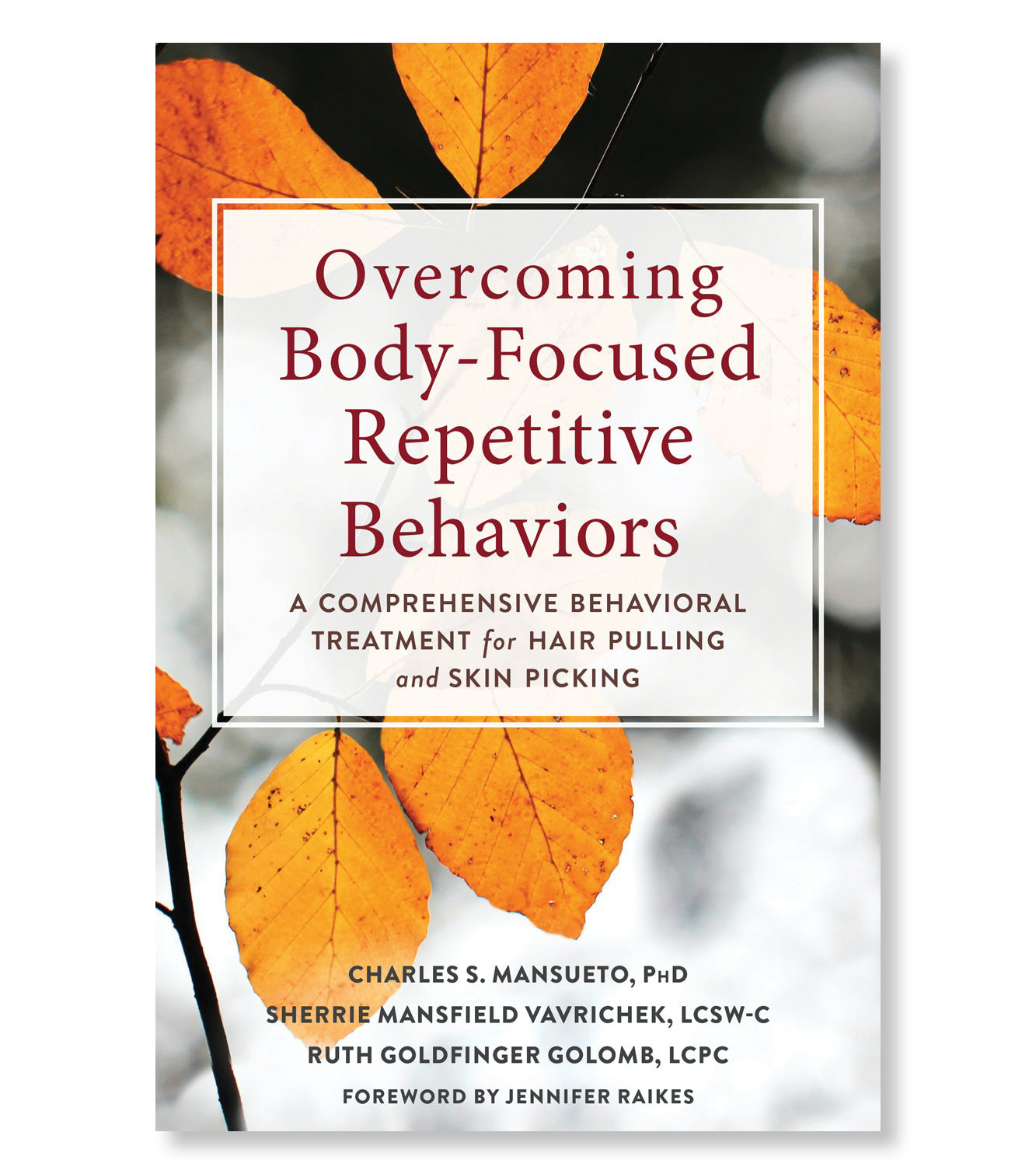
Zakhary recommended this book, which was cowritten by several clinicians and BFRB experts. She said it’s a great first start if you’re looking for help and don’t know where to begin. Peer reviewers and actual customers seem to agree.
Promising review: “Very thankful to have found this book. Great resource and gives detailed plans to take action against BFRBs.” —Amazon reviewer
Best for: doctors and patients looking for a concise yet thorough workbook to not only understand but also work through BFRBs.
You can buy Overcoming Body-Focused Repetitive Behaviors from Amazon for around $16.

As simple as it may seem, Piacentini’s first piece of advice is to put Band-Aids over your fingers. “You don’t wrap it around the way you would for a cut,” he explained. “You put it over the top of the nail, so the pad of the Band-Aid is right at the end of the finger and they can’t use their nails to pick or pull.” This family pack is an easy way for adults or children to figure out what style of Band-Aid works best or is most comfortable for them. There are more sheer, subtle options if you’re going to be in public and want something discreet, fun Pixar characters to get kids on board, and more even sturdy options for those who work with their hands.
Promising review: “Just what I needed to add to my first aid drawer. A great variety of sizes and types. A great product.” —Rainlover58
Best for: those seeking something multifunctional that they may already have around the house to help manage BFRB symptoms.
You can buy Band-Aids on Amazon for around $10.
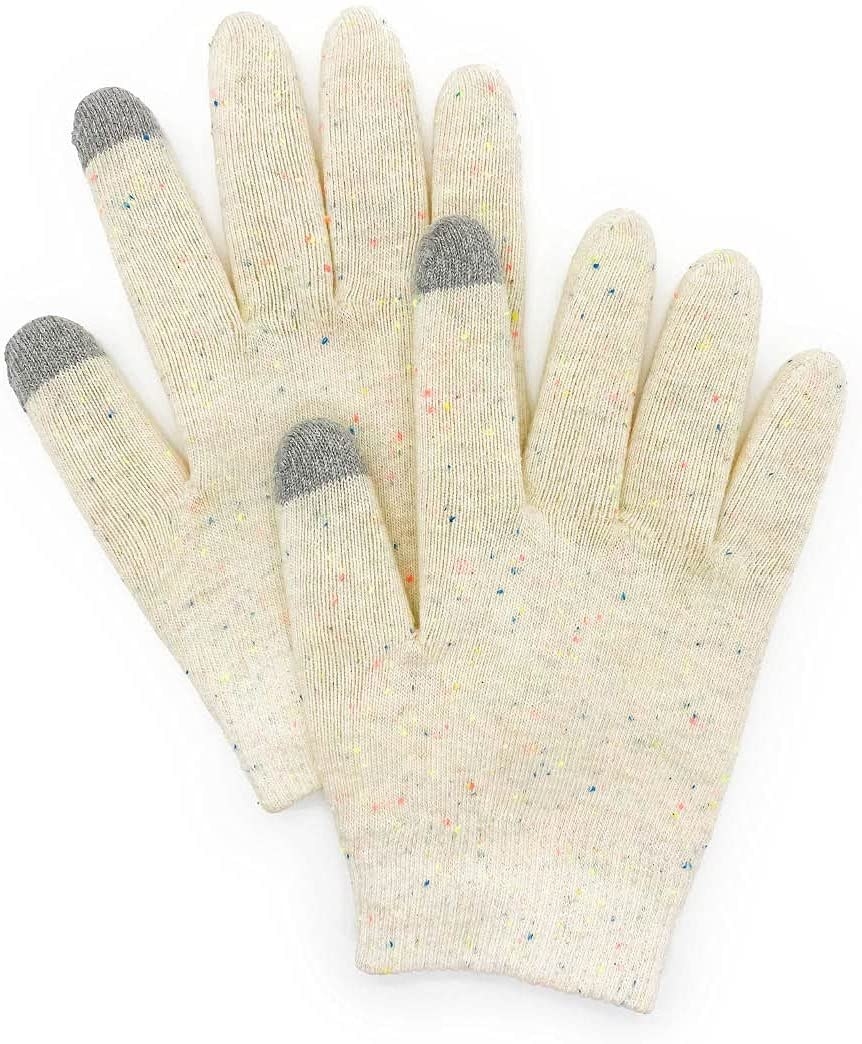
Zakhary and Piacentini both mentioned gloves as a product with obvious benefits for those who pick, pull, bite nails, or engage in any other behaviors that involve hands and fingers. Zakhary said that if they’re distracting, you can obviously take them off, but it’s a good first line of defense or barrier that can at least increase awareness. That being said, it may help to keep them on if they’re comfortable and interrupt your day-to-day activities as little as possible. These Kitsch spa gloves are moisturizing, made from soft cotton, and have touchscreen-friendly fingertips so you won’t have to take them off to use your devices.
Promising review: “I loved the cooling effect of the gel insulation while I wore them! It’s such a bonus that you can also still use your device while wearing them!! I definitely recommend trying these out! You can wash and reuse them over and over again!” —via Kitsch
Best for: anyone who needs a product that allows them to use their hands regularly while also protecting them from certain urges.
You can buy Kitsch Moisturizing Spa Gloves from Amazon for around $22.
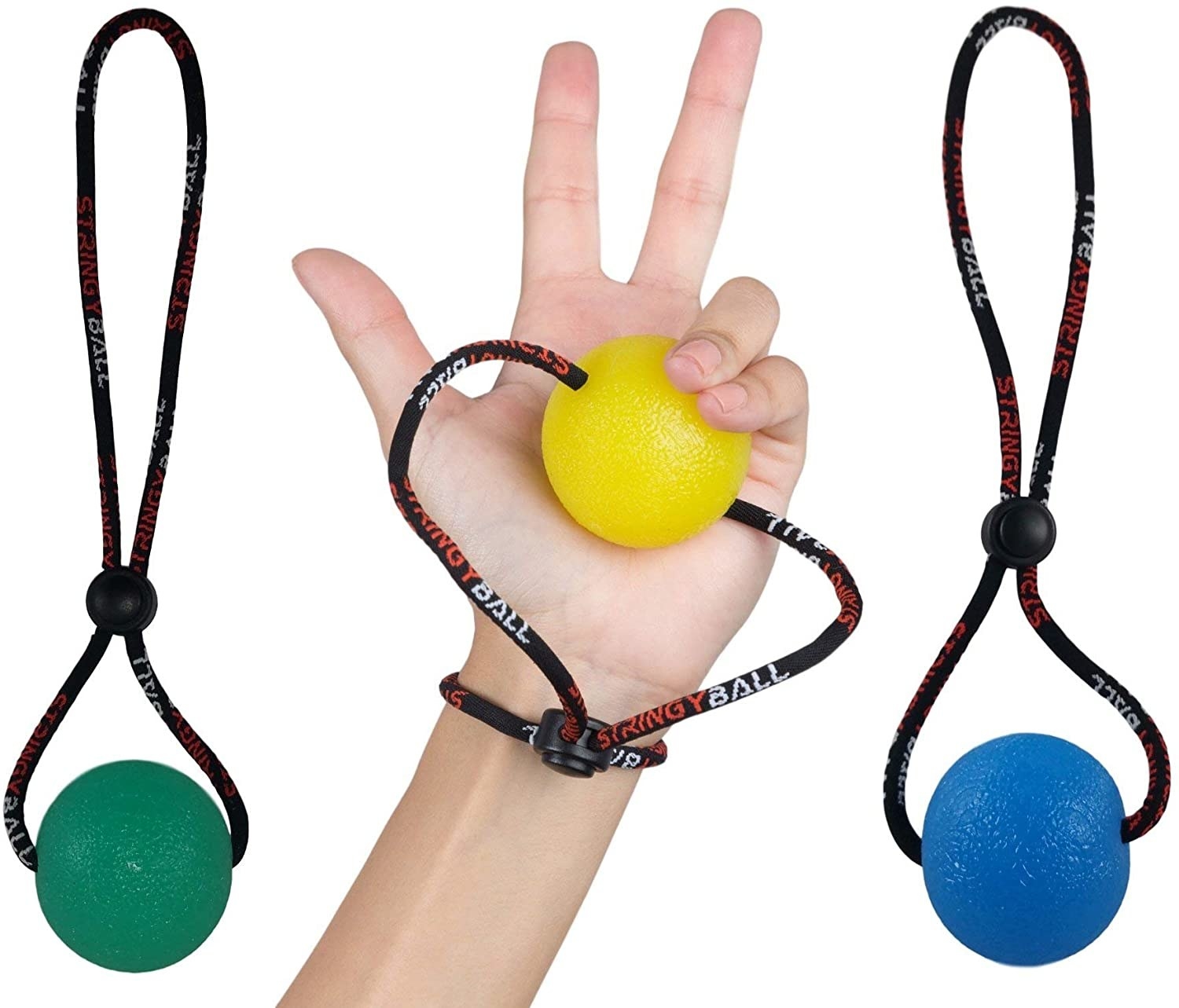
Stress balls are one product category that came up in conversations with all of our experts. Not only do they offer a distraction to occupy the hands, but they can also help relieve some of the stress or tension that comes with BFRBs. This three-pack comes with soft, medium, and firm stress balls so that you have options depending on what you and your hands prefer, and they come on a handy string that you can strap onto your wrist. The flexible cord makes it easy to keep on hand at all times and avoid dropping or losing it on the go.
Promising review: “I use them when I’m public speaking on Zoom. No one knows and it saves the cords on my devices which I was twisting previously to calm my nerves.” —L. Hewitt
Best for: those working on habit reversal training who need a replacement habit that’s easy to keep close and has the added benefit of tension release.
You can buy Secure Stress Balls on a String from Amazon for around $20.
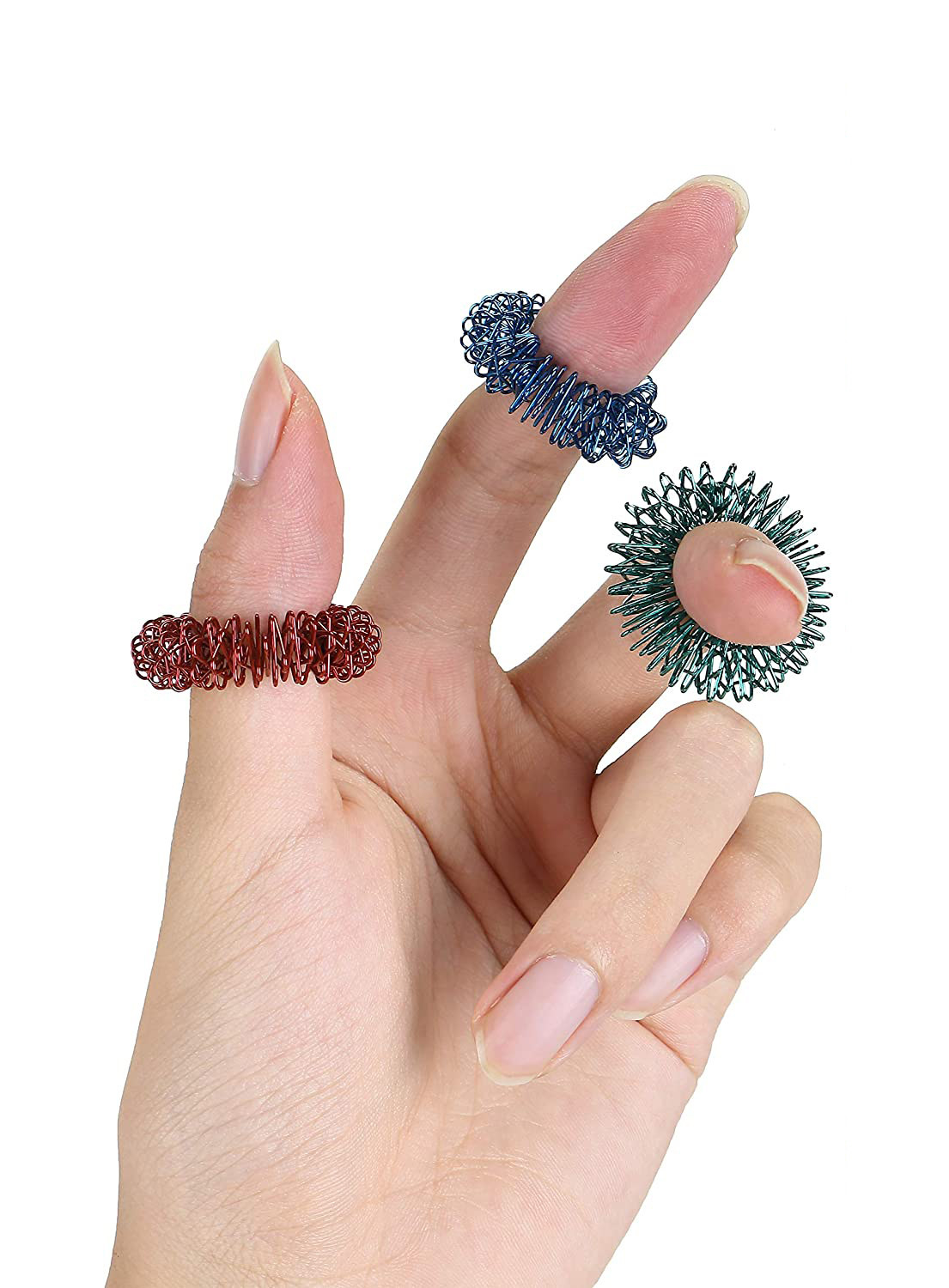
Not only do these sensory rings help busy your hands when you have premonitory urges that make you want to pick, but they’re also silent and offer some sensory stimulation in massaging the fingers. They’re a great tool to keep in the car or at the office since they’re fairly subtle and you can still use your hands while wearing the rings. The spiky massage may also be soothing for those with stress and anxiety.
Promising review: “I have been picking my fingers for years. It is an automatic external response to internal anxiety. I purchased these rings because I was researching anything that might help me stop destroying my hands. I liked that they are small, shiny and colorful. I have had them for a few days now and am amazed and pleased at how much they are helping me. I have also been able to better identify what situations increase my anxiety. They are giving me a place, other than my body, to put all the anxiety. I have put one in each key place where I work and/or socialize so they are readily available. They are also very easy to slip in a pocket. So far, I am not picking my hands at all. I am very very happy that I purchased these and that they are helping so much. Thank you!” —Brenda S. Griffith
Best for: skin pickers or those with any BFRB that may be caused by underlying anxiety seeking a subtle outlet.
You can buy Spiky Sensory Rings from Amazon for around $7.
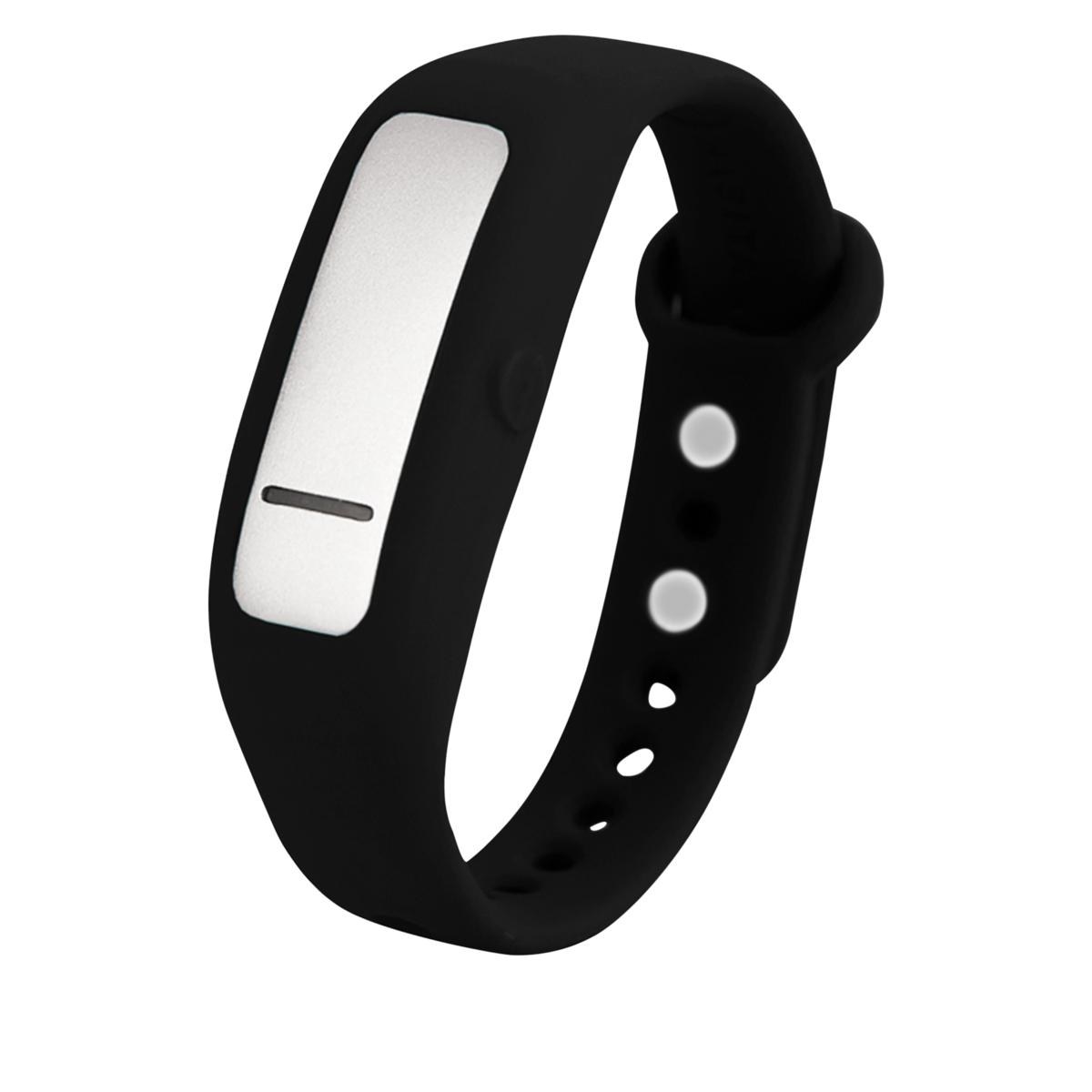
This bracelet looks like your standard Fitbit, but instead of tracking your fitness, it’s trained to vibrate any time it detects your particular BFRB behavior. Zakhary said that this bracelet is particularly helpful for those with automatic behaviors, which simply means they’re not aware that they’re picking or pulling. If you tend to pull out the hair around your forehead, you can train the HabitAware to vibrate every time you reach your hand up to that hairline. It’ll help you realize when you’re doing it so that you can gain the awareness to work on the other habit reversal techniques. Since it looks like any other smartwatch or fitness tracker, it also shouldn’t encourage any questions.
Promising review: “Keen gives me the ability to acknowledge when I’m pulling, which has done wonders to get me to stop. Before, I often recognized that I was doing it, but I had no way to translate that awareness into behavior change. Now I press the button after I get a buzz, and this simple action interferes with the pattern of pulling, so I don’t return to it (for a while, at least).” —Jen via HabitAware
Best for: anyone with automatic BFRB behaviors who needs help with awareness.
You can buy HabitAware Keen Behavior Tracker Smart Bracelet from HSN for around $80.

The obvious use for pimple patches is to help drain and heal breakouts, and they’re great for that purpose, but they also have the added benefit of stopping you from picking at blemishes. This COSRX package comes with two kinds — one with dots of varying sizes to use at home or in private, and another with uniform clear patches that are nearly invisible, so you can wear them out and about or even underneath makeup. For those whose skin picking is motivated by acne or other bumps, popping on a patch as soon as you become fixated on a blemish can stop you from touching it. They may be especially useful for those who absently pick or feel around for bumps all over the body as a way to gain awareness and prevent the behavior.
Promising review: “Adheres well. Don't feel or even notice it. Looks almost invisible when you put it on. Even partly camouflages my pimple so you don't see the redness. Makes it less noticeable.” —Kim Conard
Best for: acne-motivated skin pickers seeking a multipurpose remedy that will help heal pimples and stop picking.
You can buy COSRX Acne Pimple Patches from Amazon for around $6.

Piacentini said that Silly Putty or slime is a great way for kids to keep their hands busy, so for adults that want to get in on the fun, this therapy dough is like an elevated, more aesthetically pleasing putty. It comes in a variety of relaxing scents to help aid in stress relief while offering something to knead with your fingers and keep your hands occupied. The lovely aroma, calming colors, and malleable texture make this the ultimate BFRB stress reliever.
Promising review: “I have anxiety. I have this next to my desk to play with while I talk on the phone and for zoom meetings. I’m not a therapist or psychologist, but the scent and the act of molding it in my hands helps me stress less while I’m gathering thoughts in my head. It really is a higher quality than I thought. The scent is still there and the dough hasn’t lost any of its resistance.” —T.P.
Best for: adults who find Silly Putty to be the perfect tactile tool to ease anxiety and busy their hands and are in need of a grown-up alternative.
You can buy Pinch Me Therapy Dough from Amazon for around $30.

When I was on Accutane and my skin was utterly parched, this mask not only gave me much-needed hydration, but it also stopped me from picking at my blemishes and flaky skin. It’s definitely a bit thick and sticky, so I’d recommend keeping it away from your hairline, but it’s the perfect mask to leave on long term while you’re working from home, watching TV, or before bed. The hyaluronic acid and avocado butter will help nourish your skin to heal scabs, and the thick texture will deter you from touching your face for as long as it’s on.
Promising review: “I used this product because my skin gets very dry with all the acne medication I’m on and I needed something that works for sensitive skin. This is a great product, I leave it on overnight and my skin is so moisturized in the morning! Definitely worth the price and I would repurchase.” —Courtney A.
Best for: an at-home deterrent to touching your face that’ll also hydrate skin and help heal wounds.
You can buy the Origins Drink Up Intensive Overnight Mask from Amazon for around $33.
